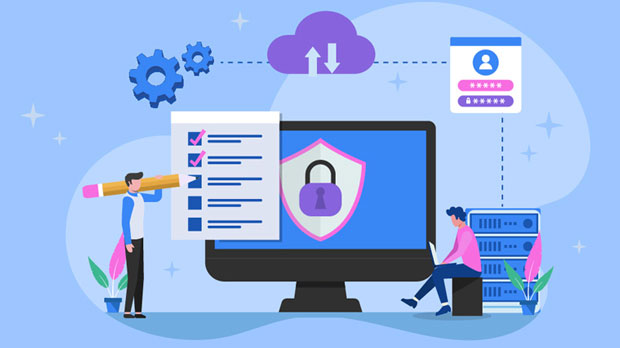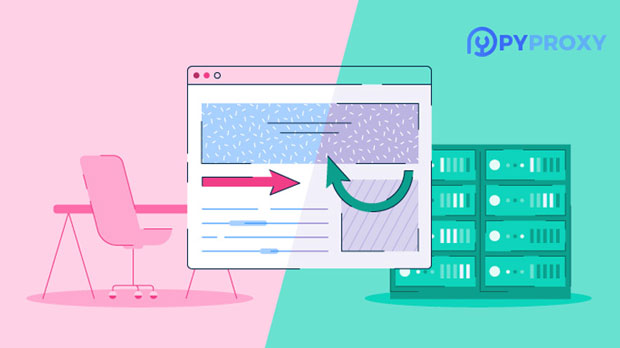Squid Proxy vs Py Proxy, who is the better caching mechanism in Socks5 proxy?
In the world of proxy servers, caching mechanisms play a crucial role in improving speed, efficiency, and bandwidth usage. Among the most popular proxy technologies, Squid Proxy, py proxy, and sock s5 proxies stand out for their unique features. The comparison between Squid Proxy and Py Proxy, specifically regarding the caching mechanisms used in Socks5 proxies, is an important topic for those seeking to optimize their network performance. This article will delve into the various aspects of caching, including how Squid and Py Proxy handle caching, the advantages of Socks5 proxies, and ultimately, which solution offers superior caching capabilities. By the end, readers will gain insight into how to choose the most suitable proxy for their specific needs. Introduction to Proxy Servers and Caching MechanismsProxy servers act as intermediaries between clients and the internet. They route requests from clients to the appropriate server and then return the response to the client. Caching is an essential feature of proxy servers, as it enables them to store frequently requested data to reduce latency, improve speed, and decrease bandwidth usage. By storing a copy of the requested data, proxies can quickly serve the same content to multiple clients without having to fetch it from the original server repeatedly.Caching is particularly important when dealing with large-scale networks or high-traffic websites, as it can significantly improve response times and reduce load on the backend servers. In this regard, Squid Proxy and Py Proxy stand out for their different approaches to caching.Squid Proxy and Its Caching MechanismSquid Proxy is one of the most widely used caching proxy servers. It operates by storing copies of frequently accessed content and serving them to clients directly, which helps reduce the load on the origin servers and speeds up content delivery. Squid's caching mechanism is highly customizable, allowing administrators to set various parameters to control how long content is cached, how much content can be cached, and how cache expiry is handled.Some key features of Squid Proxy's caching mechanism include:1. Cache Hierarchy: Squid supports hierarchical caching, meaning it can communicate with other Squid servers to share cached content. This reduces the need to retrieve content from the original server and improves caching efficiency across multiple networks. 2. Cache Management: Squid allows administrators to fine-tune cache management policies. For example, they can specify how much space to allocate for caching, set expiration times for cached content, and prioritize certain types of content (such as images or videos) for faster caching.3. Cache Refresh: Squid also supports cache refreshing, meaning that it can check if the cached content has been updated on the origin server and refresh the cache accordingly. This helps ensure that clients always receive up-to-date content.4. Access Control: Squid has a robust access control mechanism that allows administrators to specify who can access the cached content, based on IP address, user-agent, or other criteria.Overall, Squid Proxy’s caching mechanism is robust, customizable, and scalable, making it ideal for large-scale environments where high-performance caching is required.Py Proxy and Its Caching MechanismPy Proxy, on the other hand, is a relatively newer and more lightweight proxy server compared to Squid. While it does offer basic caching functionality, it is generally not as feature-rich or as scalable as Squid Proxy in terms of caching.Py Proxy’s caching mechanism is designed to be simple and easy to configure, focusing on delivering content quickly without the complexity of advanced caching policies. Some characteristics of Py Proxy’s caching mechanism include:1. Simple Cache Storage: Py Proxy uses a straightforward caching approach where requested content is stored locally for quick retrieval. This method is effective for smaller environments with lower traffic but may struggle to handle larger loads or high-demand content.2. Limited Customization: Unlike Squid, Py Proxy’s caching mechanism offers fewer customization options. For example, administrators may not have as much control over how long content is cached or how cache expiry is managed. This could be a limitation for users who require fine-tuned caching policies.3. No Cache Hierarchy: Py Proxy lacks the hierarchical caching support that Squid offers. As a result, cached content is stored on a single server, limiting the ability to share cache across multiple servers or networks. This may result in more frequent requests to the original server, leading to higher latency and bandwidth usage.4. Basic Cache Management: Py Proxy’s caching management is less advanced than Squid’s, which could be a drawback for larger networks or high-traffic environments. However, for smaller-scale or personal use, Py Proxy’s caching might still suffice.While Py Proxy provides caching capabilities, it is not as sophisticated or scalable as Squid Proxy. Its simpler caching mechanism may be suitable for basic use cases but is likely to fall short in more demanding network environments. socks5 proxy and Its Role in CachingSocks5 is a protocol rather than a specific proxy server like Squid or Py Proxy. It is designed to handle a wide variety of network protocols, including TCP and UDP, making it more versatile in terms of the types of traffic it can handle. However, Socks5 proxies are often used in conjunction with other proxy servers, such as Squid or Py Proxy, to provide additional layers of privacy, security, and performance.When it comes to caching, Socks5 proxies do not inherently offer caching mechanisms. Instead, they rely on the caching capabilities of the proxy server that they are paired with. For example, if a Socks5 proxy is used with Squid Proxy, the caching will be handled by Squid’s caching system. In contrast, a Socks5 proxy used with Py Proxy would rely on Py Proxy’s simpler caching system.Comparing the Caching Mechanisms of Squid, Py Proxy, and Socks5When evaluating the caching mechanisms of Squid Proxy and Py Proxy in the context of Socks5 proxies, several factors come into play:1. Scalability: Squid Proxy’s caching system is highly scalable and well-suited for large-scale environments with high traffic demands. It can handle multiple clients and large amounts of cached data efficiently, making it the superior choice for enterprise-level networks. Py Proxy, by comparison, is more suitable for smaller networks or personal use.2. Customization: Squid offers more advanced caching controls and customization options, allowing administrators to fine-tune cache management policies. Py Proxy, in contrast, is more simplistic and offers fewer options for customization.3. Performance: Squid Proxy’s caching mechanism is optimized for performance, with features like cache hierarchies, cache refreshing, and fine-grained cache control. These features ensure faster content delivery and lower latency. Py Proxy, while effective for basic caching needs, lacks the advanced performance optimization of Squid.4. Complexity: Squid’s caching system can be complex to configure and manage, requiring more administrative expertise. Py Proxy’s simplicity makes it easier to deploy and manage, but it comes at the cost of performance and scalability.Conclusion: Which Proxy Server Has the Best Caching Mechanism?In terms of caching mechanisms, Squid Proxy is the clear winner for larger-scale, high-performance environments. Its advanced caching features, scalability, and customization options make it the ideal choice for enterprises and high-traffic networks. Py Proxy, while a lightweight and simpler option, is more suitable for smaller-scale use and lacks the advanced caching capabilities of Squid.For users working with Socks5 proxies, it’s important to note that the caching performance will largely depend on the proxy server paired with the Socks5 protocol. If high-performance caching is a priority, Squid Proxy is the optimal solution. For those seeking simplicity and ease of use in a smaller network, Py Proxy may suffice, but it falls short in terms of advanced caching features.Ultimately, the best caching solution depends on the specific needs of the user, with Squid Proxy being the go-to option for more complex and high-demand environments.
2025-03-03

























































